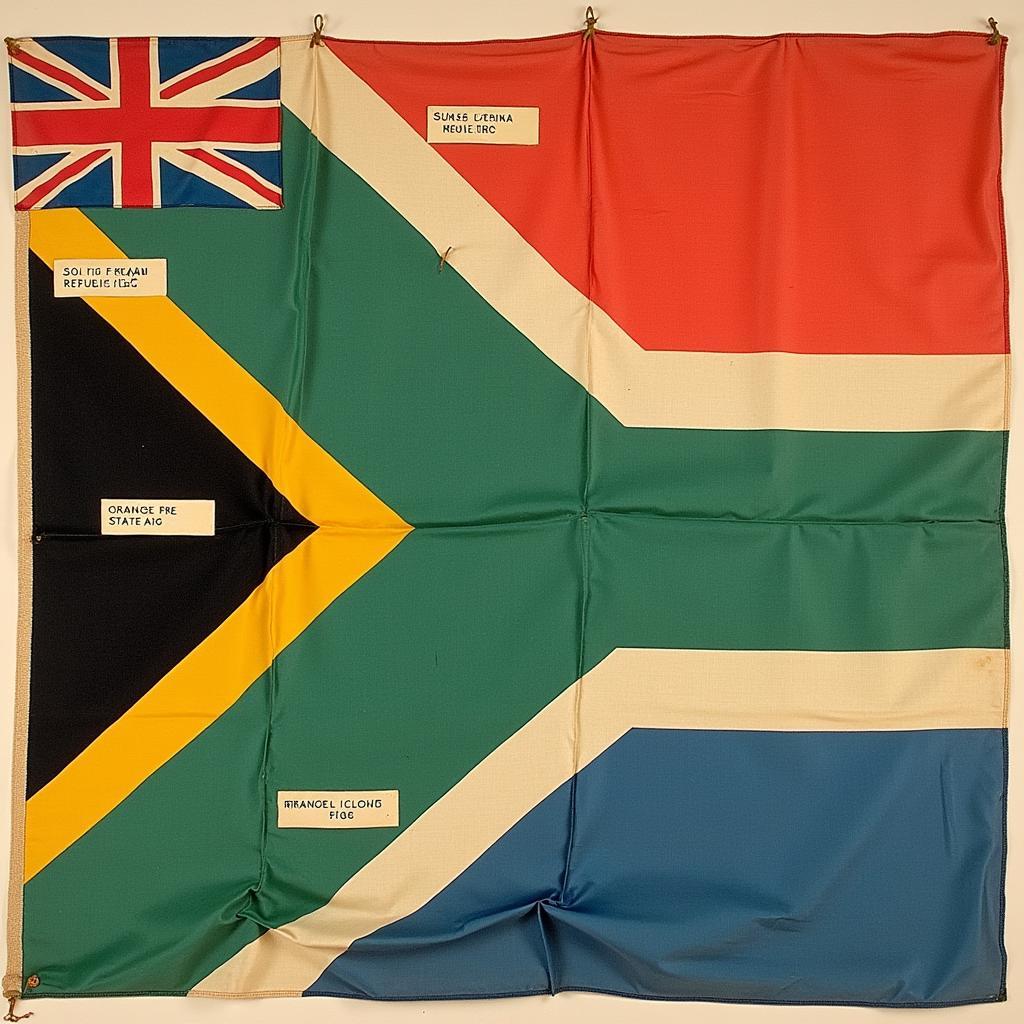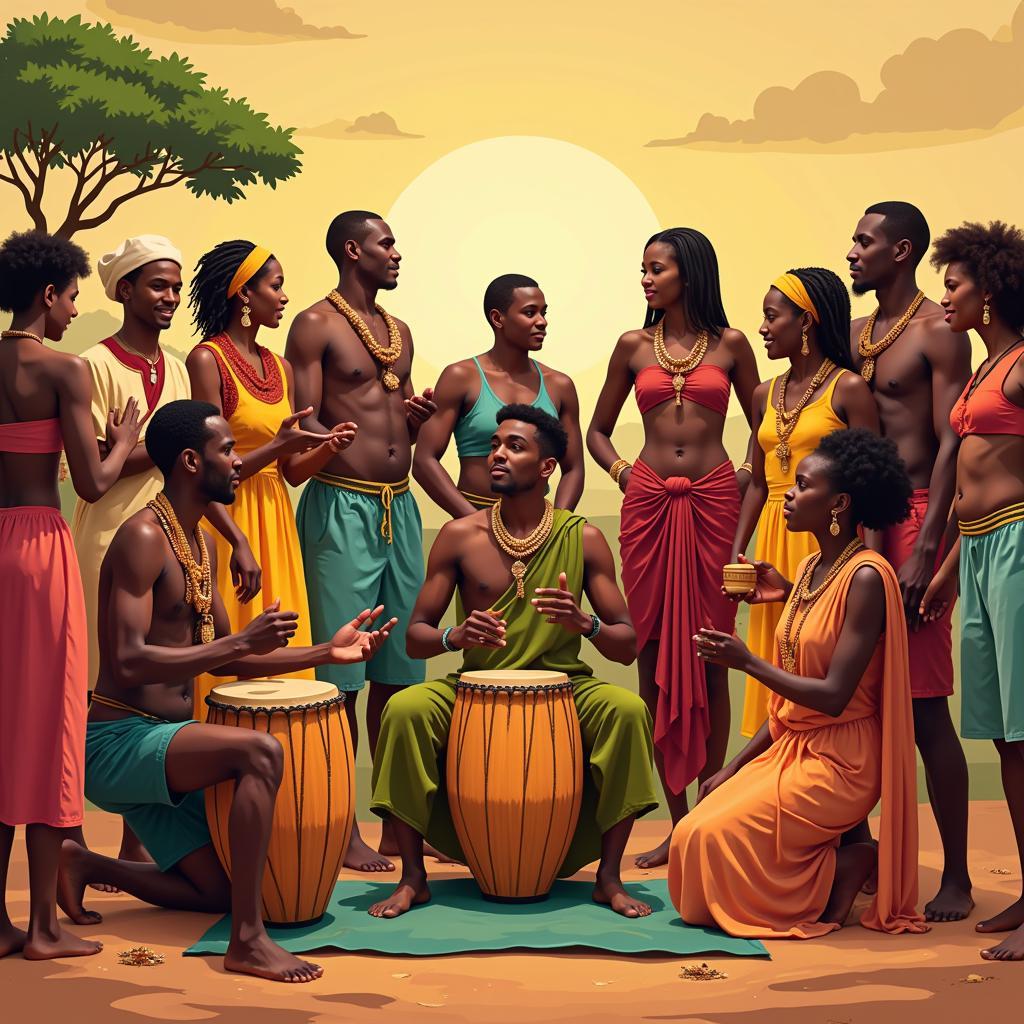Unraveling the History of the Old South African Flag
The Old South African Flag, a potent symbol of apartheid, evokes strong emotions and complex discussions even today. This article delves into its history, symbolism, and the eventual transition to the current flag, providing a comprehensive understanding of its significance within the broader context of South African history.
The flag, officially adopted in 1928 and flown until 1994, was a stark visual representation of the country’s segregated past. Its design incorporated the flags of Britain, the Orange Free State, and the South African Republic, reflecting the historical influences that shaped the nation. But this seemingly simple design masked a deeper narrative of racial division and oppression. It stood as a constant reminder of the institutionalized racism that permeated every aspect of life for Black South Africans.
Deconstructing the Design: Symbolism and Significance
Each element of the old South African flag carried symbolic weight. The prominent Union Jack represented British colonial rule, a legacy that profoundly impacted South African society. The smaller flags, representing the Orange Free State and the South African Republic (Transvaal), further reinforced the historical context of the nation’s formation. What the flag notably lacked, however, was any representation of the indigenous African population, further underscoring the exclusionary nature of the apartheid regime.
This omission was a deliberate act, reinforcing the notion of white supremacy that underpinned the apartheid system. The flag became a visual shorthand for the disenfranchisement and marginalization of the Black majority. Its presence was a constant source of pain and resentment for those subjected to the injustices of apartheid.
 Old South African Flag Design Elements
Old South African Flag Design Elements
From Apartheid to Unity: The Transition to a New Flag
As the apartheid era drew to a close, the need for a new national symbol became increasingly apparent. The old flag, irrevocably tied to a painful past, could no longer represent a nation striving for reconciliation and unity. The transition to a new flag was a crucial step in the nation’s journey towards a democratic future.
The process of designing and adopting the new South African flag was a complex and delicate undertaking. It involved extensive public consultation and careful consideration of various designs. The final result, a vibrant and multicolored flag, was unveiled in 1994. It symbolized the hope for a new beginning, a rainbow nation free from the shackles of its past. Check out these African flags and their names for comparison.
 South African Flag Transition Ceremony
South African Flag Transition Ceremony
The Old South African Flag Today: A Relic of the Past
Today, the old South African flag is largely viewed as a relic of a bygone era. Its display is often met with controversy, as it continues to evoke strong emotions and memories. While some argue for its preservation as a historical artifact, others view it as a symbol of hate that should be consigned to the past.
“The old flag represents a traumatic chapter in our history,” says Dr. Nomusa Makhubu, a prominent South African historian. “Its presence can be incredibly triggering for many people who lived through the horrors of apartheid.”
The debate surrounding the old South African flag highlights the complexities of dealing with a difficult past. It serves as a reminder of the enduring impact of apartheid and the ongoing need for reconciliation and healing. Explore the rich diversity of African continent country flags to appreciate the evolution of national symbols.
What does the old South African flag look like?
The old South African flag consisted of three horizontal bands: orange, white, and blue. In the center, it featured miniature versions of the Union Jack, the Orange Free State flag, and the Transvaal flag.
Why was the old South African flag changed?
The old flag was changed in 1994 to symbolize the end of apartheid and the beginning of a new, democratic South Africa. The old flag was seen as a symbol of racial segregation and oppression.
In conclusion, the old South African flag stands as a powerful symbol of a complex and troubled past. Understanding its history and symbolism is crucial for comprehending the profound transformation that South Africa has undergone. The transition to the new flag represents a decisive break from the legacy of apartheid and a commitment to building a more inclusive and equitable future. Learn more about African big game animals and delve into other aspects of this vibrant continent.
FAQ
- When was the old South African flag adopted? (1928)
- When was the old South African flag replaced? (1994)
- What did the old South African flag represent? (Apartheid era)
- What are the colors of the old South African flag? (Orange, white, and blue)
- What flags were incorporated into the old South African flag design? (Union Jack, Orange Free State, and Transvaal flags)
- Why is the old South African flag controversial? (Represents a painful past of racial segregation and oppression)
- What does the new South African flag symbolize? (Unity, diversity, and a democratic future)
Related Questions and Articles
- What are some other symbols of apartheid?
- How did the transition to the new South African flag impact the country?
- What are the meanings of the colors and design elements of the new South African flag?
- What are some other articles about South African history and culture on this website?
For further information or assistance, please contact us:
Phone: +255768904061
Email: kaka.mag@gmail.com
Address: Mbarali DC Mawindi, Kangaga, Tanzania.
We have a 24/7 customer service team available to assist you.


